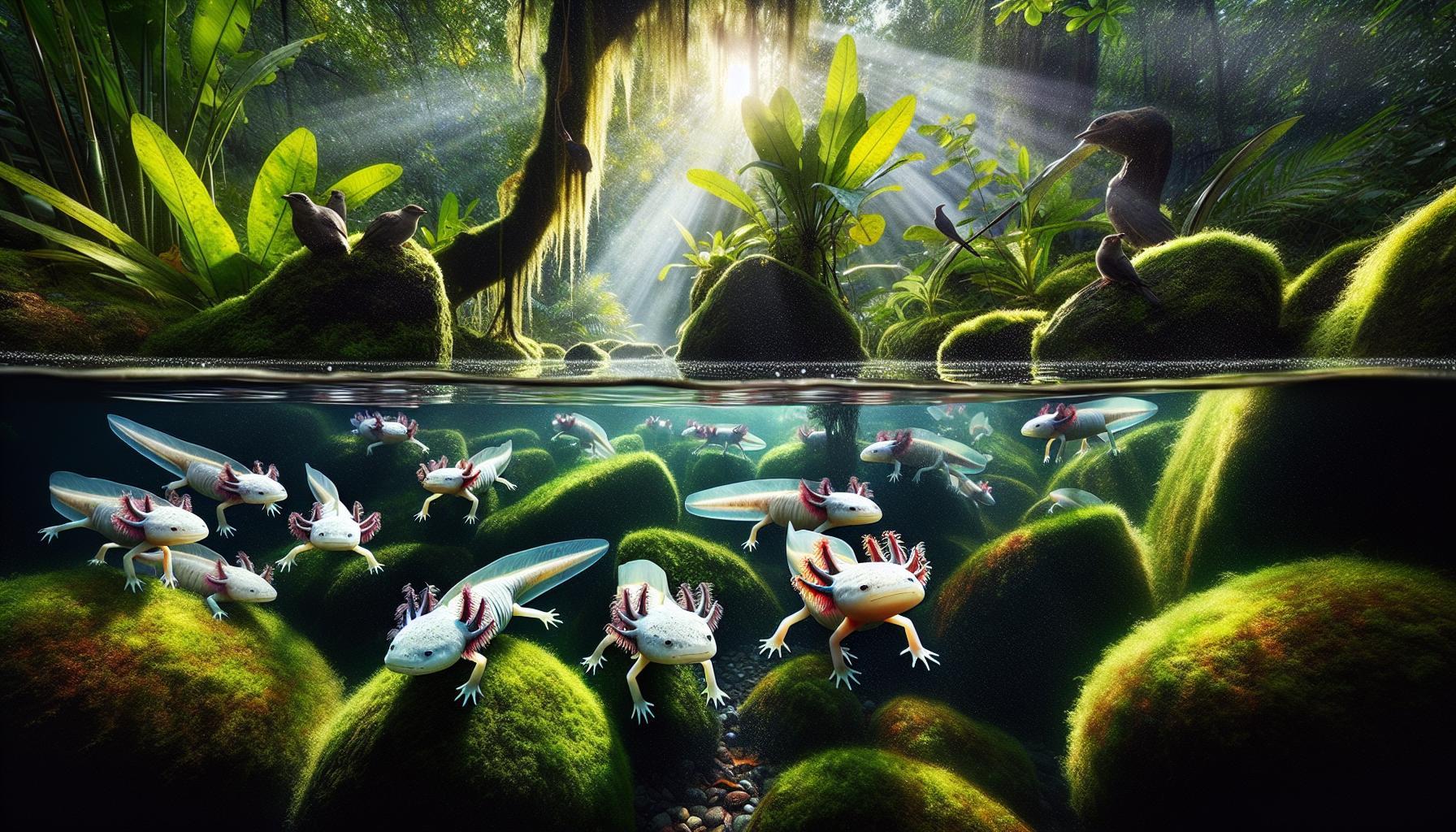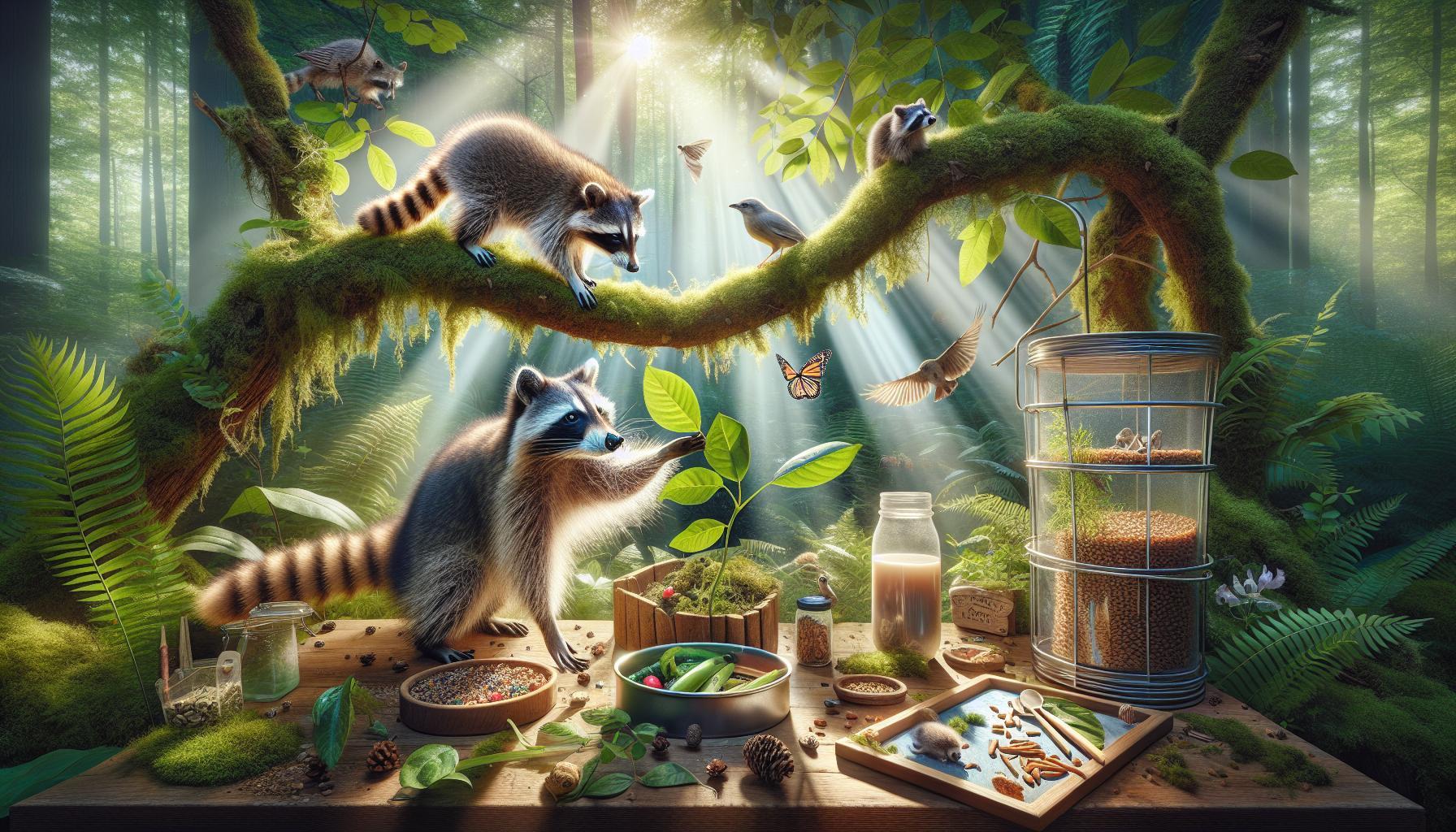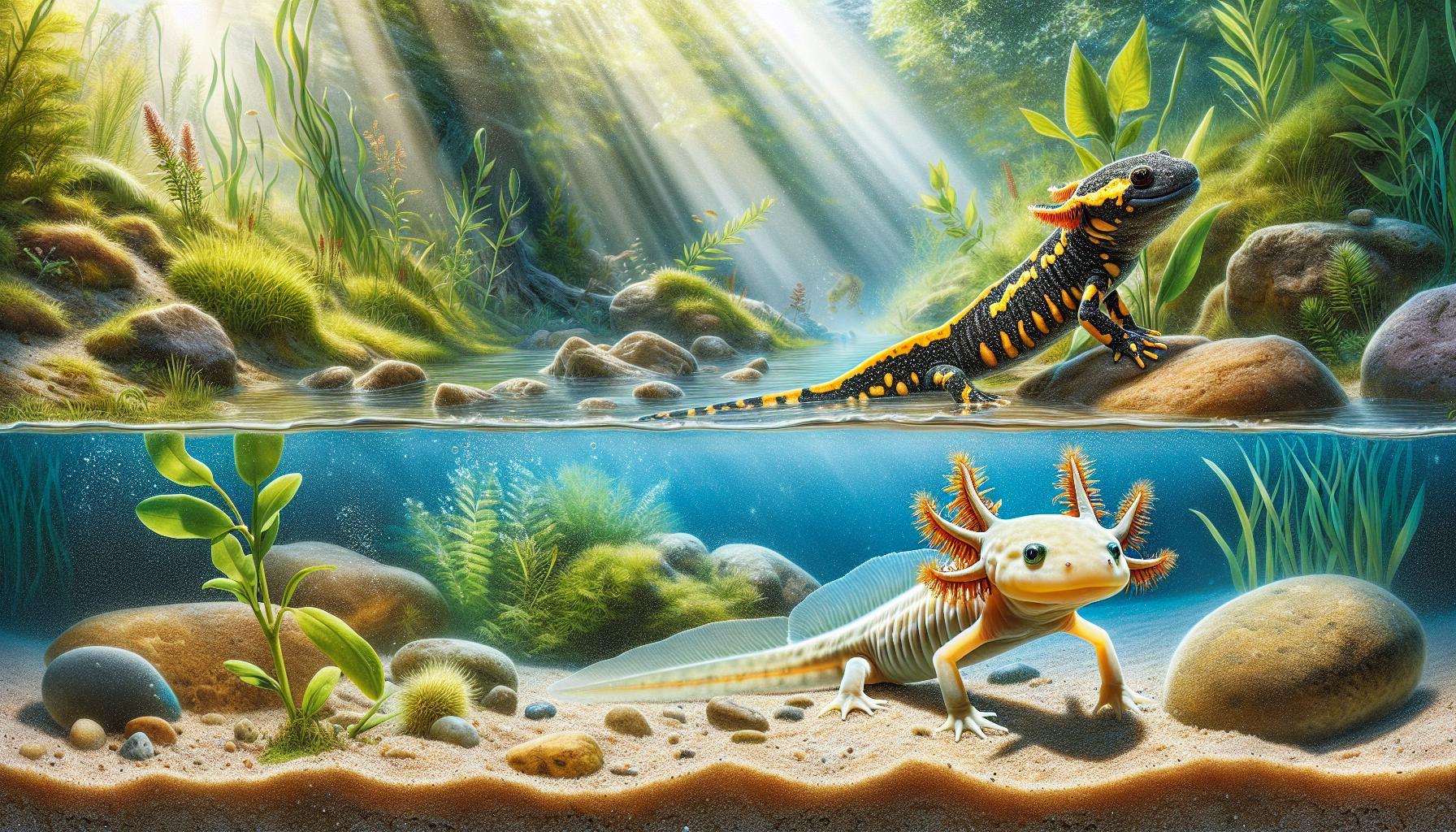Did you know that wild axolotls, those enchanting creatures synonymous with regeneration and amphibious wonder, are native to the critically endangered lakes of Mexico? Understanding where these fascinating animals live not only enriches our appreciation of their unique biology but also underscores the urgent need for conservation efforts in their rare habitats.
In this exploration, we’ll delve into the natural environments that axolotls call home, including the intricate ecosystems of the Xochimilco lake complex in Mexico City. By uncovering the fragile yet vibrant world of the axolotl, we will highlight the importance of safeguarding these ecosystems, which are teetering on the brink of extinction.
Join us on this journey to learn how habitat loss and pollution threaten these remarkable creatures, and how being informed can empower you to contribute to their preservation, whether as a pet owner or wildlife enthusiast. Discover the beauty and fragility of the axolotl’s wild habitat, and ignite your passion for protecting one of nature’s most extraordinary marvels.
Contents
- 1 The Natural Habitat of Axolotls in Mexico
- 2 Unique Ecosystems Supporting Wild Axolotls
- 3 Threats to Axolotl Habitats and Conservation Efforts
- 4 The Role of Wetlands and Lakes in Axolotl Life
- 5 Axolotls and Their Symbiotic Relationships in Nature
- 6 Understanding the Axolotl’s Water Requirements
- 7 Exploring Axolotl Behavior in the Wild
- 8 Capturing the Beauty: Axolotls in Their Natural Environment
- 9 Comparing Axolotls’ Habitat Needs vs. Domestic Care
- 10 How Urbanization Affects Wild Axolotl Populations
- 11 Accessing Axolotl Habitats: A Guide for Wildlife Enthusiasts
- 12 Preserving the Marvel: Future of Axolotl Habitats
- 13 Frequently Asked Questions
- 14 Insights and Conclusions
The Natural Habitat of Axolotls in Mexico
The axolotl, a remarkable amphibian also known as the “Mexican walking fish,” thrives solely in the freshwater ecosystems of Mexico, predominantly found in the remnants of the ancient lake complex of Xochimilco. Originally more widespread, these creatures now inhabit only a couple of key locations, namely Lake Xochimilco and, to a lesser extent, the now largely extinct Lake Chalco. Their unique adaptations allow them to live in this specific and delicate environment, characterized by a network of canals and artificial lakes where water is stagnant, rich in aquatic vegetation, and supports biodiversity that is vital for their survival.
The ecosystems hosting axolotls are not just home to these fascinating amphibians but also contribute significantly to the overall biodiversity. The aquatic habitats contain a variety of species, including fish, invertebrates, and plants that play a critical role in maintaining the delicate balance required for axolotls to thrive. These habitats support the axolotl’s carnivorous diet, which consists mainly of small fish, worms, and other aquatic animals. The presence of rich plant life provides necessary cover and a breeding ground for their prey, illustrating the interconnectedness of these ecosystems.
Unfortunately, the axolotl’s natural habitat faces severe threats, largely driven by urbanization, pollution, and habitat destruction. Human encroachment around Mexico City has led to significant environmental degradation, particularly due to water diversion for agricultural and urban use. Conservation efforts are crucial to maintaining the delicate balance of this ecosystem. Protecting the remaining habitats, restoring degraded areas, and ensuring clean water availability are vital steps necessary for the survival of the axolotl in the wild.
For those keen on preserving the axolotl’s legacy, understanding its natural habitat is essential not just for academic purposes but also for fostering deeper ecological values. Visitors and conservationists are encouraged to explore the Xochimilco area, which, despite challenges, remains a vibrant testament to the resilience of nature and the enduring marvel of the axolotl in its natural setting. By participating in local conservation initiatives or ecological tourism, individuals can contribute positively to the future of these extraordinary creatures.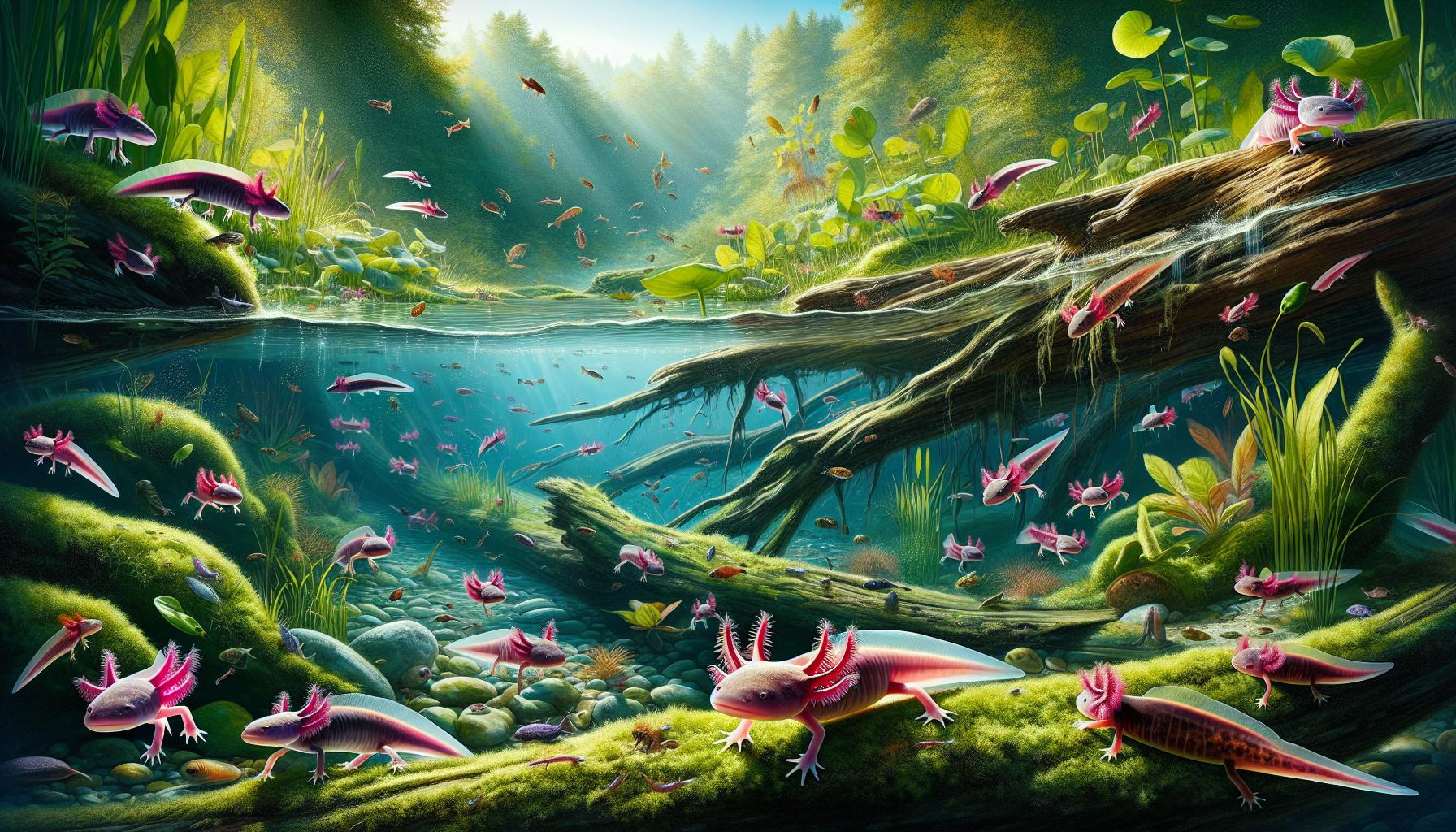
Unique Ecosystems Supporting Wild Axolotls
The axolotl exists in a distinctive ecosystem that pulses with life, relying on intricate networks of canals and ponds primarily located within the remnants of Mexico’s ancient lake system. These freshwater environments provide a home for not only the axolotl but also a diverse array of flora and fauna, creating a unique ecological tapestry. The shallow waters are often laden with rich vegetation, including reeds and water lilies, which serve vital functions in maintaining water quality and supporting the axolotl’s diet predominantly made up of small fish, worms, and crustaceans.
The interconnected waterways of Xochimilco, where axolotls are predominantly found, embody a delicate balance of life. This system, a UNESCO World Heritage site, is crucial not just for the axolotl but also for numerous other species that inhabit the same ecosystem. Each aspect of this environment plays a role: the water plants provide hiding spots for axolotls and breeding grounds for their food sources, while the slow-moving waters facilitate a stable temperature and oxygen level, essential for their survival. The biodiversity here is a reflection of how various organisms interact harmoniously, showcasing the intricate dependencies that underpin the health of these ecosystems.
However, the survival of these rare habitats hinges on ongoing conservation efforts. As pollution and urbanization encroach upon these delicate environments, the axolotl’s existence is increasingly threatened. Initiatives aimed at restoring and maintaining water quality, alongside the preservation of native plant life, are vital for ensuring that these ecosystems continue to support not just the axolotl but the entire web of life within these freshwater habitats. Awareness and active participation in conservation programs can make a meaningful impact, empowering wildlife enthusiasts to engage directly with the preservation of this unique and vital ecosystem.
By understanding the unique ecosystems that support wild axolotls, we can appreciate the intricate nature of their habitat and recognize the urgent need to protect it. As visitors explore these areas, they can witness the beauty and complexity of wildlife thriving in fragile environments, inspiring a deeper commitment to conservation efforts aimed at securing the future of these exceptional creatures.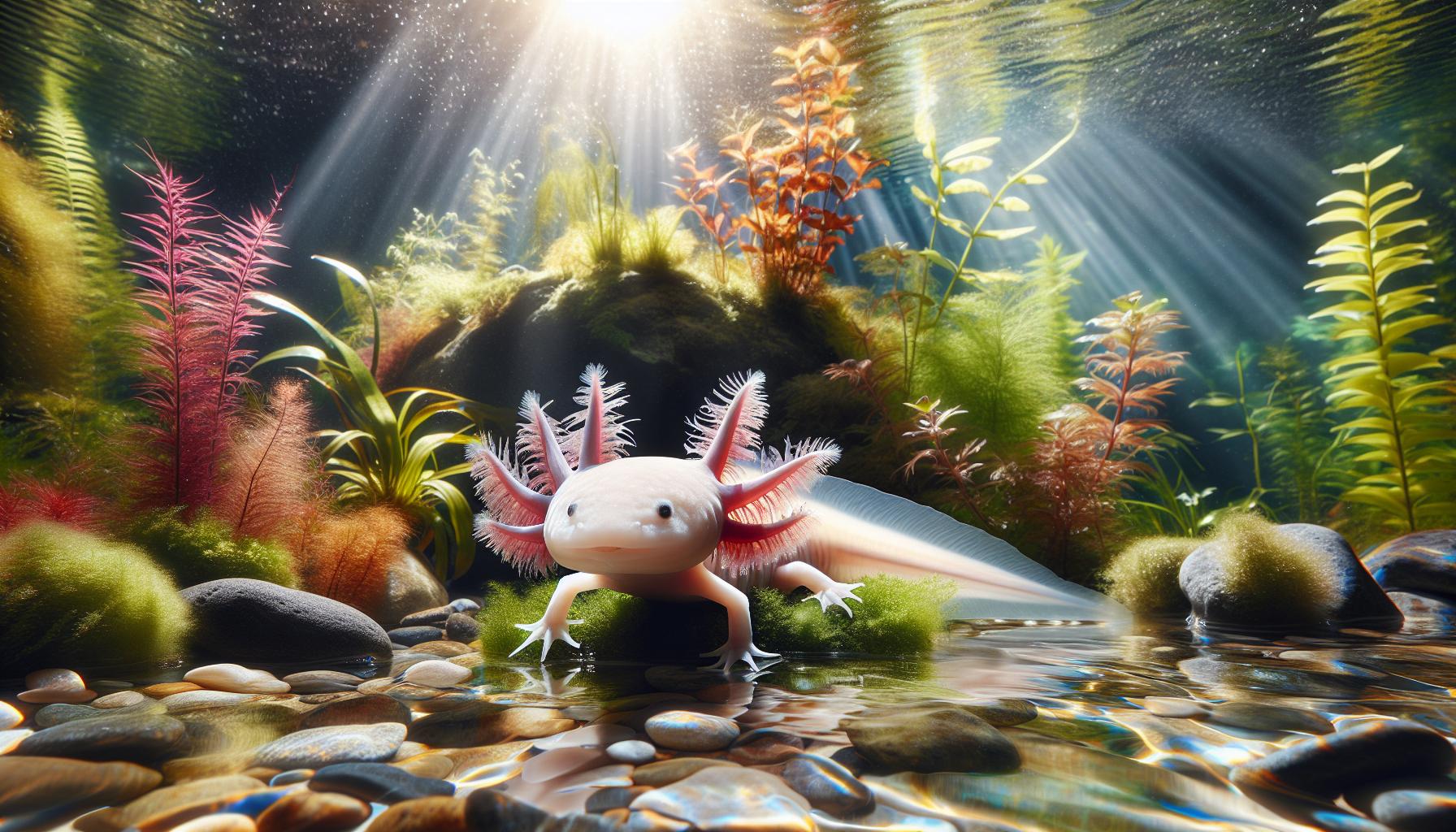
Threats to Axolotl Habitats and Conservation Efforts
The axolotl, often referred to as the “Mexican walking fish,” thrives in a unique ecosystem defined by the interconnected waterways of Xochimilco. However, this remarkable habitat faces escalating threats that jeopardize the survival of both the axolotl and the intricate web of life that supports it. Two primary adversaries stand out: urbanization and pollution, which are rapidly altering the natural landscape.
As cities expand, the ancient lake system, once teeming with life, is being drained and transformed for agriculture and development. This encroachment not only diminishes the habitat available for axolotls but also disrupts the delicate balance of their ecosystem. The construction of roads, bridges, and housing projects results in habitat fragmentation, isolating populations and diminishing genetic diversity, making it increasingly difficult for axolotls to thrive. Additionally, the introduction of invasive species often disrupts food sources and the existing ecological balance, posing further challenges to this already vulnerable species.
Pollution presents another significant threat, with agricultural runoff, untreated wastewater, and plastic waste contaminating the waters where axolotls live. Such pollutants introduce harmful chemicals that can impair the axolotl’s health and reproductive success. High nutrient loads can lead to algal blooms, which deplete oxygen levels in the water, creating hypoxic conditions that are lethal to these aquatic creatures. Ensuring that water quality is maintained is not just critical for axolotls but is also essential for the entire ecosystem.
To combat these threats, conservation efforts are crucial. Local organizations and international groups are working tirelessly to restore and protect axolotl habitats through a combination of grassroots initiatives and scientific research. Restoration projects aim to revitalize degraded wetlands and waterways, while educational programs foster community engagement and awareness of the need for sustainable practices. Citizens can support these initiatives by participating in clean-up efforts, advocating for sustainable land-use policies, or contributing to organizations focused on biodiversity conservation.
Successful conservation depends not only on these dedicated efforts but also on the collective actions of wildlife enthusiasts, local communities, and policymakers. By actively engaging in habitat preservation, individuals can play a pivotal role in ensuring that future generations continue to marvel at the unique beauty of axolotls in their natural environment.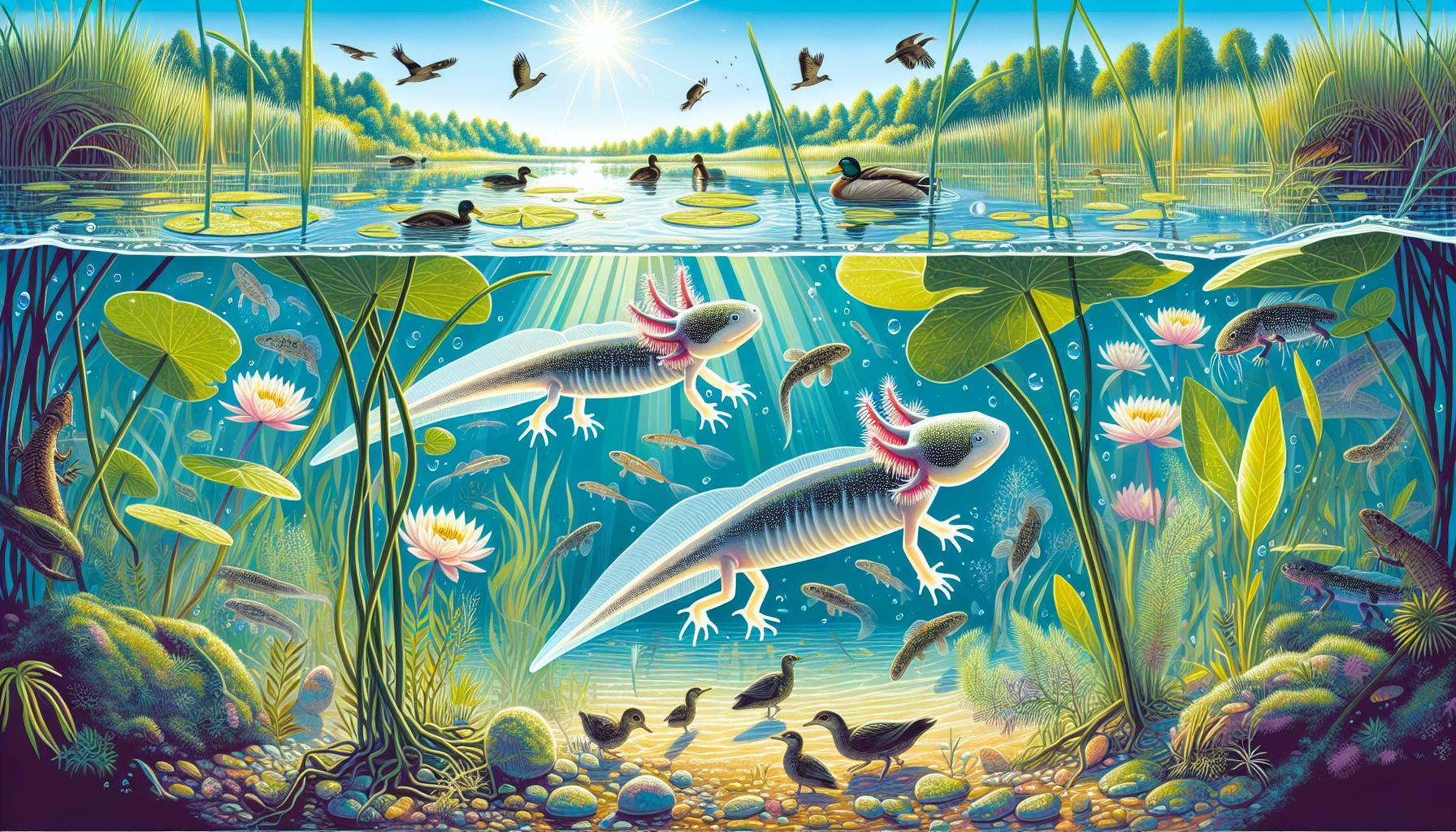
The Role of Wetlands and Lakes in Axolotl Life
The axolotl, a mesmerizing creature of the aquatic world, relies heavily on its unique habitat consisting of wetlands and lakes, particularly within the remnants of Lake Xochimilco. This ecosystem not only provides the necessary water for their survival but also supports a rich tapestry of life that interlinks with the axolotl’s existence. Observations show that axolotls thrive in shallow, slow-moving waters, often adorned with lush aquatic vegetation that offers shelter and hunting grounds. The warm temperatures and stable conditions of these wetlands create an ideal environment for their growth, reproduction, and activity.
Wetlands play a pivotal role in maintaining the delicate balance of the axolotl’s ecosystem. They serve as a nursery for juvenile axolotls, providing them with ample food sources such as insects and small crustaceans, crucial for their development. The abundant vegetation not only offers protection from predators but also functions as a breeding ground for various organisms, contributing to the biological diversity necessary for a healthy habitat. Furthermore, these wetlands filter water, removing pollutants and excess nutrients, which are essential for sustaining the axolotl population. When the delicate interplay of these factors is disrupted-whether through pollution or habitat destruction-the entire ecosystem faces decline.
Maintaining proper water quality is also critical for the axolotl’s health. These amphibians are particularly sensitive to changes in their environment, which can occur as a result of urbanization and the introduction of toxic substances into their habitat. High levels of pollutants can impede reproduction and growth, making it imperative for conservation efforts to focus on safeguarding these wetlands. Regular monitoring of water conditions and community-led clean-up initiatives can significantly impact the longevity of these unique ecosystems.
Moreover, for enthusiasts who maintain axolotls in captivity, understanding their natural habitat can inform their care routines. Replicating aspects of the wetland environment-such as providing soft substrate, live plants, and stable water parameters-ensures a healthier and more enriching life for these captivating creatures. This knowledge not only promotes better pet care but also fosters a deeper appreciation for the natural wonders of the axolotl’s habitat, igniting a passion for conservation efforts both in the wild and at home.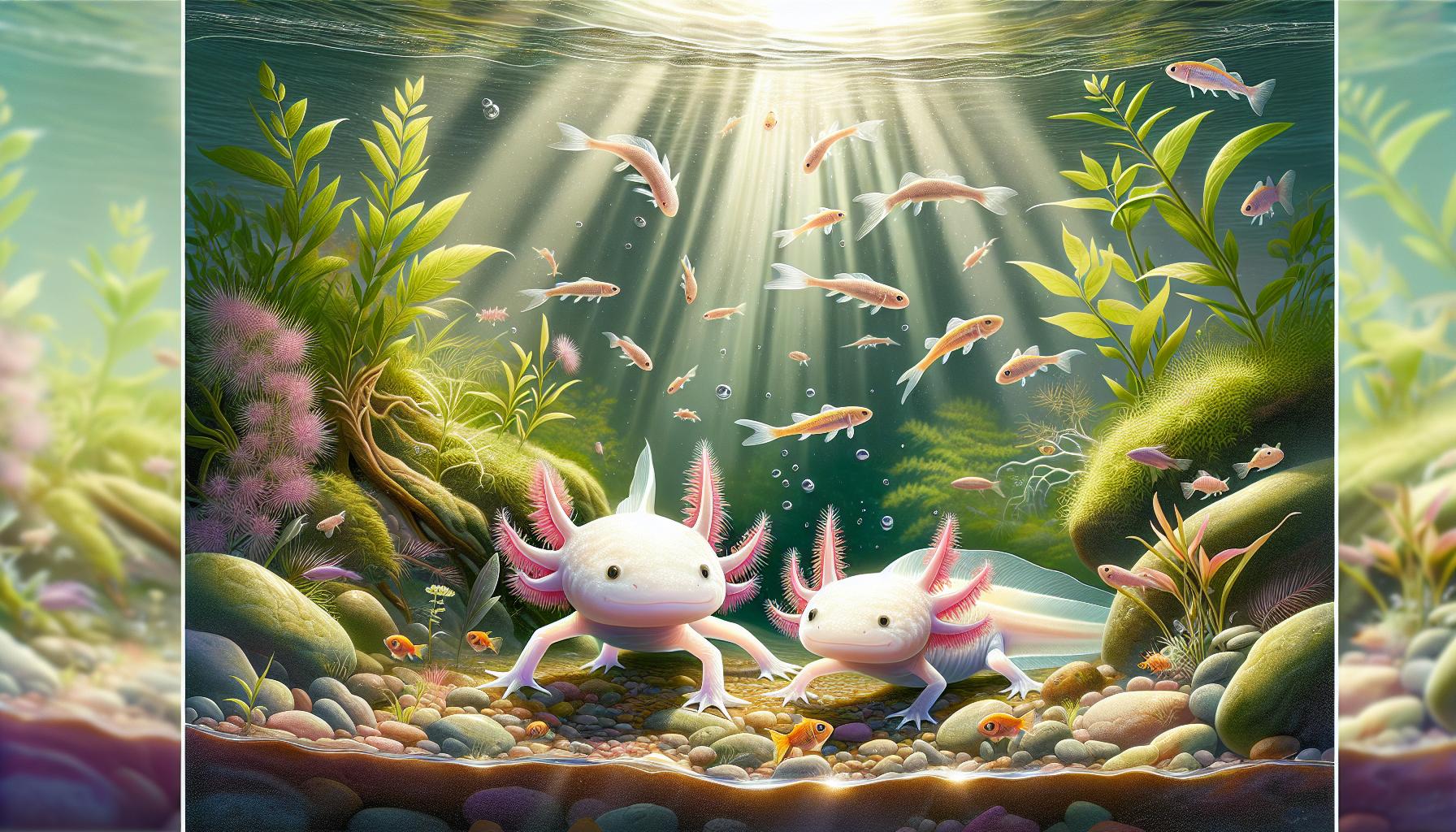
Axolotls and Their Symbiotic Relationships in Nature
In the serene waters of their native habitat, axolotls engage in intricate relationships that reflect the delicate balance of their ecosystem. These amphibians, often referred to as “Mexican walking fish,” thrive not only because of their unique adaptations but also due to symbiotic connections with various species within their environment. One fascinating aspect of these relationships is their interaction with aquatic plants, which provide both shelter and hunting grounds. The dense foliage of sedges and reeds not only conceals juvenile axolotls from predators but also serves as a breeding ground for microfauna, which constitute a vital part of their diet.
Moreover, the presence of beneficial bacteria in the sediment of wetlands contributes significantly to the health of axolotl populations. These microorganisms play a crucial role in breaking down organic matter, fostering the nutrient-rich environment that supports the growth of essential algae and small food sources like insect larvae and crustaceans. In turn, axolotls help maintain the ecological balance by controlling these populations, preventing overgrowth that could lead to habitat degradation. This mutualistic relationship highlights the interconnectedness of life in the wetlands, demonstrating that each species, no matter how small, plays a pivotal role in sustaining the delicate ecological web.
For those who care for axolotls in captivity, replicating aspects of these symbiotic relationships can lead to more vibrant and healthy pets. Including live plants in their tanks not only provides enrichment and natural hiding places but also encourages the growth of beneficial bacteria essential for maintaining water quality. Additionally, understanding the types of food sources that mimic their natural diet can dramatically enhance their well-being. Providing a varied diet of worms, insects, and specially formulated pellets ensures that these captivating creatures receive the nutrients they need while also simulating their natural feeding behaviors.
Maintaining these symbiotic dynamics is crucial, especially in light of increasing threats to axolotl habitats from urbanization and pollution. Conservation efforts that focus on protecting these unique ecosystems not only benefit wild axolotls but also promote biodiversity, emphasizing the importance of every organism in sustaining a balanced environment. Enthusiasts can contribute to these efforts by supporting habitat restoration projects or advocating for cleaner water initiatives, ensuring that these remarkable amphibians continue to thrive in their rare and enchanting habitats.
Understanding the Axolotl’s Water Requirements
The fascinating axolotl is highly attuned to its aquatic environment, which plays a crucial role in its survival and overall health. Native to the remnants of Lake Xochimilco in Mexico, these unique amphibians rely on specific water conditions that mirror their natural habitat-shallow, slow-moving waters rich in vegetation. is essential for both conservation efforts in the wild and for proper care in captivity.
Axolotls thrive in cool, fresh water, with an optimal temperature range between 16°C and 18°C (60°F to 64°F). Warmer waters can lead to stress and potential health issues, including reduced appetite and increased vulnerability to disease. Maintaining stable temperatures is crucial, as fluctuations can be detrimental. For pet owners, using reliable aquarium heaters and thermometers can help achieve and sustain these ideal conditions, ensuring the axolotl remains healthy and active.
In addition to temperature, water quality is paramount. Axolotls are sensitive to pollutants and toxins commonly found in tap water, such as chlorine and heavy metals. It is vital to use a high-quality water conditioner and to regularly test for ammonia, nitrites, and nitrates to keep their environment clean. Regular water changes of 20-30% per week are recommended to maintain water quality and promote a healthy ecosystem within the tank. A filter that provides gentle water flow can also be beneficial, mimicking the slow-moving waters of their native habitat while keeping the environment oxygen-rich.
Moreover, the presence of beneficial bacteria is essential for a stable aquatic habitat. These microorganisms break down waste products and help filter the water, returning vital nutrients to the ecosystem. In both wild and captive environments, fostering these bacteria can be achieved by allowing the tank to cycle properly before introducing an axolotl and by incorporating live plants, which not only enrich the habitat but also improve water quality.
By replicating these optimal water conditions in captivity, aquarists can ensure their axolotls not only survive but thrive, echoing the natural beauty of their rare habitats in Mexico.
Exploring Axolotl Behavior in the Wild
Wild axolotls exhibit a captivating array of behaviors that reflect their unique adaptations to life in the shallow waters of Lake Xochimilco. These amphibians are predominantly nocturnal, engaging in most of their foraging and social interactions during the night. They possess a highly developed sense of smell, which they use to hunt small prey such as insects, worms, and small crustaceans. A fascinating aspect of their behavior is their ability to recognize individual axolotls, suggesting a level of social complexity previously underestimated.
In this rare habitat, axolotls often display an intriguing blend of territoriality and social interaction. While they can be solitary, especially during the day, they will sometimes gather in groups around abundant feeding areas. This social behavior can lead to vivacious displays where individuals use body language, including subtle movements and positions, to communicate. Understanding this natural social dynamic can greatly enhance the care and environment provided for axolotls in captivity, as replicating space and hiding places can support their instinctive behaviors.
Moreover, axolotls exhibit remarkable regenerative capabilities, which influence their behavior significantly. When injured, they have the ability to regrow lost limbs and even parts of their heart and brain. This not only affects how they interact with potential threats and navigate their environment-avoiding conflict is often a survival strategy-but also highlights the importance of a stress-free habitat. For pet owners, minimizing stress through proper tank setups and environmental enrichment helps maintain the axolotl’s health and well-being in a captive setting.
Understanding the behaviors of wild axolotls thus provides essential insights for anyone interested in keeping these unique creatures. By creating an environment that encourages natural behaviors-such as hiding spaces, cooler water, and appropriate social dynamics-caretakers can support their axolotls in thriving while safeguarding their well-being and mimicking the beauty of their native habitat.
Capturing the Beauty: Axolotls in Their Natural Environment
In the enchanting waters of Lake Xochimilco, the axolotl thrives in an environment that is as captivating as the creature itself. Known for its striking external gills and vibrant colors, this unique amphibian is not merely an anomaly but an integral part of a fragile ecosystem, showcasing nature’s creativity in a breathtaking manner. The lake’s shallow, slow-moving waters create a perfect habitat, teaming with rich aquatic vegetation, including water lilies and reeds, which serve both as shelter and hunting grounds for these remarkable salamanders.
The beauty of axolotls in their natural habitat is underscored by their remarkable adaptations. Not only do these creatures retain their juvenile characteristics into adulthood-a phenomenon known as neoteny-but they deeply engage with their environment through behaviors shaped by their surroundings. Their nocturnal nature allows them to maximize their hunting efficiency, primarily preying on small insects, worms, and crustaceans thriving in their lush habitat. This fascinating interaction between predator and prey highlights the delicate balance of the lake’s ecosystem.
Environmental Considerations
To fully appreciate the beauty of axolotls in their native habitat, one must also acknowledge the challenges they face. The unique ecosystems that sustain them are at risk from various factors, including pollution, invasive species, and urban development in Mexico City. These threats significantly impact the quality of the water and the surrounding vegetation, endangering not just the axolotl but the entire biodiversity of Lake Xochimilco. Wildlife enthusiasts and conservationists thus find themselves in a race against time to preserve this remarkable environment.
For those who maintain axolotls in captivity, understanding their natural habitat becomes crucial. Providing a suitable tank that mimics the gentle flow and temperature of their lakeside environment can greatly enhance their well-being. Create enrichment opportunities by including plenty of hiding spots with plants and soft substrate, allowing your axolotl to exhibit its natural behaviors. By embracing the enchanting beauty of axolotls in the wild and understanding their needs, caretakers can foster a more harmonious existence, bridging the gap between nature and domestic care while advocating for the preservation of their remarkable habitats.
Comparing Axolotls’ Habitat Needs vs. Domestic Care
In the lush, interconnected waterways of Lake Xochimilco, wild axolotls flourish in conditions that perfectly suit their natural instincts and biological needs. They inhabit slow-moving waters rich in aquatic vegetation, offering both food and shelter, while showcasing the remarkable adaptations that allow them to thrive in this unique environment. However, when caring for axolotls in a domestic setting, it’s crucial to replicate these habitat conditions closely, as their well-being hinges on appropriate water quality, temperature, and structured surroundings.
Creating an ideal tank environment for axolotls involves several key factors that mirror their natural habitat. Water quality is paramount; axolotls thrive in clean, well-oxygenated water, ideally maintained at temperatures between 16-18°C (60-65°F), mirroring the lake’s cool ecosystem. It’s advisable to use a good filtration system, as axolotls are sensitive both to chlorine and fluctuations in water parameters. A stable pH level of 6.5 to 8.0 should be maintained for optimal health.
Enrichment and Space also play significant roles in both wild and captive environments. In their natural habitat, axolotls navigate through submerged plants and utilize structures to hide and hunt efficiently. Thus, in an aquarium, it’s essential to provide ample hiding places, such as caves and vegetation, to stimulate their natural behaviors. Use soft substrates that allow for digging and exploration-a contrast to bare-bottom tanks, which can heighten stress in these sensitive creatures. Moreover, the tank size should accommodate swimming and exploring behavior; a minimum of 20 gallons is often recommended for a single axolotl.
Dietary Considerations
Feeding habits in captivity should also mirror their natural predatory behaviors. Wild axolotls mostly consume small insects, worms, and crustaceans. Alternatively, in captivity, they can be paired with appropriate food sources such as high-quality pellets, live or frozen foods (like bloodworms or brine shrimp) to ensure a diet that meets their nutritional requirements. It’s crucial to recognize their unique feeding habits to prevent obesity, which can occur from overfeeding-a common issue among axolotl keepers.
Ultimately, understanding the differences between axolotls’ habitat needs in the wild versus those in captivity informs pet owners about how to create a compassionate, thriving living space. By providing a well-maintained, naturally enriching environment, keepers not only promote the health and happiness of their axolotls but also bridge the gap between the captivating beauty of their natural environments and responsible domestic care.
How Urbanization Affects Wild Axolotl Populations
As urban sprawl continues to encroach upon the unique ecosystems of Lake Xochimilco, the wild axolotl populations are increasingly threatened. Found only in this culturally and ecologically significant area of Mexico City, axolotls are highly susceptible to the impacts of pollution, habitat degradation, and water diversion caused by urbanization. The transformation of natural landscapes into urban environments not only alters vital habitats but disrupts the delicate balance that axolotls need to thrive.
One of the most pressing issues affecting axolotls is water quality. Urban runoff introduces various pollutants into their habitats, including heavy metals and chemicals from manufacturing and agriculture. Contaminated water can lead to detrimental health effects on axolotls, reducing their reproductive success and increasing mortality rates. Poor water quality considerably impacts their ability to survive, as clean and well-oxygenated water is crucial for their respiratory health.
Moreover, the construction of roads and buildings often leads to the destruction of wetlands and other natural features that contribute to the axolotl’s habitat. With fewer submerged plants and diverse aquatic environments, axolotls struggle to find food and shelter, affecting their growth and reproduction. Habitat fragmentation can also prevent their movement between critical areas, diminishing genetic diversity and making populations more vulnerable to extinction.
The plight of the axolotl has sparked increased awareness and conservation efforts. Organizations are working to combat urbanization’s detrimental effects through habitat restoration and pollution prevention initiatives. Creating awareness within local communities about the significance of preserving natural habitats can encourage more sustainable practices to protect these rare animals. Regular clean-up events and educational programs can foster a sense of responsibility among residents toward their unique natural heritage, ensuring that future generations can continue to marvel at the beauty of axolotls in the wild.
In summary, the urbanization of areas surrounding Lake Xochimilco poses a significant threat to the survival of axolotls. By understanding the challenges they face and promoting beneficial practices, both locals and enthusiasts can help mitigate these issues and support the conservation of this remarkable species.
Accessing Axolotl Habitats: A Guide for Wildlife Enthusiasts
Exploring the vibrant ecosystems where wild axolotls reside offers both adventure and a deep connection with nature. These fascinating creatures inhabit the remaining waters of Lake Xochimilco in Mexico, a unique and delicate freshwater environment characterized by its slow-moving waters and rich aquatic vegetation. For wildlife enthusiasts aiming to witness these remarkable amphibians in their natural habitat, understanding how to access these areas responsibly is crucial.
To reach the axolotl habitats, visitors typically begin in Mexico City, taking public transport or arranging local guides familiar with the intricate canals and lakes. The network of water channels in Xochimilco is best navigated by traditional trajinera boats, which provide a scenic route through this UNESCO World Heritage Site. It’s essential to choose eco-friendly tour operators who prioritize the conservation of local wildlife and ecosystems, ensuring that your visit contributes positively to the area.
While navigating these waterways, it’s vital to maintain a respectful distance from the axolotls. Observing them requires patience and a quiet demeanor, as sudden movements or loud noises can easily startle these sensitive creatures. Wildlife enthusiasts should equip themselves with binoculars or waterproof cameras to capture the unique behavior of axolotls without disturbing their natural surroundings. Moreover, it’s helpful to be aware of the best times to visit; early morning or late afternoon are often optimal for sightings, as axolotls are more active during these cooler parts of the day.
In addition to viewing axolotls, enthusiasts should take the opportunity to appreciate the broader ecosystem of Lake Xochimilco. The area is home to various bird species, lush vegetation, and other aquatic life, creating a biodiverse landscape worthy of exploration. Engaging with local conservation organizations can also provide insight into ongoing efforts to protect the axolotl and its habitat, allowing visitors to contribute to these initiatives through awareness and support.
Through responsible exploration and admiration of their natural habitat, wildlife enthusiasts can play a role in the preservation of wild axolotls, ensuring these enchanting beings continue to thrive in the waters of Mexico for generations to come.
Preserving the Marvel: Future of Axolotl Habitats
The survival of one of the world’s most extraordinary amphibians, the axolotl, hangs delicately in the balance, deeply intertwined with the fate of its unique habitat in Lake Xochimilco, Mexico. Known for its remarkable regenerative abilities and unique characteristics, this aquatic marvel is increasingly threatened by urban development, pollution, and invasive species. Preserving the fragile ecosystems supporting wild axolotls is not just a matter of conservation; it’s a commitment to maintaining biodiversity and cultural heritage.
To safeguard the future of axolotl habitats, concerted conservation efforts are essential. Establishing protected areas within Lake Xochimilco is a critical step towards halting habitat degradation. These designated zones can preserve vital breeding grounds and maintain the ecological integrity of the waters. Moreover, collaboration with local communities is paramount. Involving fishermen, farmers, and other stakeholders in conservation initiatives can foster a sense of ownership and responsibility, ensuring sustainable practices that benefit both the natural environment and local livelihoods.
Implementing educational programs aimed at raising awareness about the ecological value of axolotls and their habitat is vital. Schools, eco-tourism initiatives, and community workshops can drive understanding of the importance of preserving natural resources. This educational outreach can also address the impacts of pollution and promote eco-friendly practices among residents and visitors alike. By fostering a culture of respect and care towards this unique habitat, we can mitigate many anthropogenic threats that axolotls face.
Ultimately, innovation and research must be paired with grassroots efforts to develop effective conservation strategies. Scientists continue to explore habitat restoration techniques that could revive degraded areas of the lake. Initiatives such as breeding programs and studies on the effects of environmental changes provide critical insights into how best to support axolotl populations. Engaging citizens in citizen science projects can also contribute valuable data and foster community engagement in preservation efforts.
By combining knowledge, community involvement, and scientific research, the future of wild axolotl habitats can be preserved, allowing this fascinating species to thrive for generations to come. It’s a shared journey where every effort, no matter how small, contributes to the magnificent tapestry of life that the axolotl represents.
Frequently Asked Questions
Q: Where can wild axolotls be found?
A: Wild axolotls are found exclusively in the lake complex of Xochimilco and, previously, Lake Chalco in Mexico. Currently, they are believed to be extinct in Lake Chalco due to habitat degradation and pollution, primarily thriving in Xochimilco’s unique ecosystem [1[1].
Q: Why are axolotls considered critically endangered?
A: Axolotls are critically endangered due to habitat loss from urbanization, pollution, and water diversion for agriculture and human consumption. Conservation efforts are crucial to protect their remaining habitats in the Xochimilco lake complex [2[2].
Q: What type of water do wild axolotls prefer?
A: Wild axolotls thrive in fresh, still-water lakes. They inhabit lentic ecosystems characterized by slow-moving and nutrient-rich waters, which are essential for their survival and reproduction [2[2].
Q: How do water conditions affect axolotl populations?
A: Water quality is vital for axolotl populations; they require clean, well-oxygenated water with minimal pollutants. Poor water conditions can lead to health issues and affect their breeding success, contributing to population decline [3[3].
Q: What are the main threats to axolotl habitats?
A: The main threats to axolotl habitats include pollution, urbanization, invasive species, and water scarcity. These factors disrupt their natural ecosystems and worsen their critically endangered status [2[2].
Q: How does urbanization impact axolotl populations in Mexico?
A: Urbanization negatively impacts axolotl populations by destroying natural habitats and altering water quality and availability. As cities expand, the remaining habitats in Xochimilco are increasingly at risk from infrastructure development [3[3].
Q: What role do wetlands play in axolotl ecosystems?
A: Wetlands play a vital role in axolotl ecosystems by providing a unique habitat for breeding and feeding. These areas maintain biodiversity and supply essential nutrients, making them critical for the survival of wild axolotls [1[1].
Q: How can conservation efforts help preserve axolotl habitats?
A: Conservation efforts can help preserve axolotl habitats by promoting sustainable water management, restoring natural ecosystems, and reducing pollution. Raising awareness and protecting the remaining areas in Xochimilco are essential steps for the species’ survival [2[2].
Insights and Conclusions
As we’ve explored, the rare habitats of the wild axolotl are truly remarkable, showcasing the unique ecosystems of Mexico. From the vibrant waters of Lake Xochimilco to the conservation challenges these creatures face, understanding their natural environment is essential for their survival. If you’re captivated by axolotls, consider delving deeper into the mysteries of their behavior and care by checking out our articles on “Axolotl Care Tips for Beginners” and “Understanding Axolotl Behavior.”
Don’t miss out on further enriching your knowledge-sign up for our newsletter to stay updated on the latest insights and valuable resources. Your passion for these enchanting creatures can make a difference; take action now to support axolotl conservation efforts. Share your thoughts in the comments below and join our community of wildlife enthusiasts eager to learn more. Your journey into the mesmerizing world of axolotls doesn’t have to end here; there’s always more to discover!

